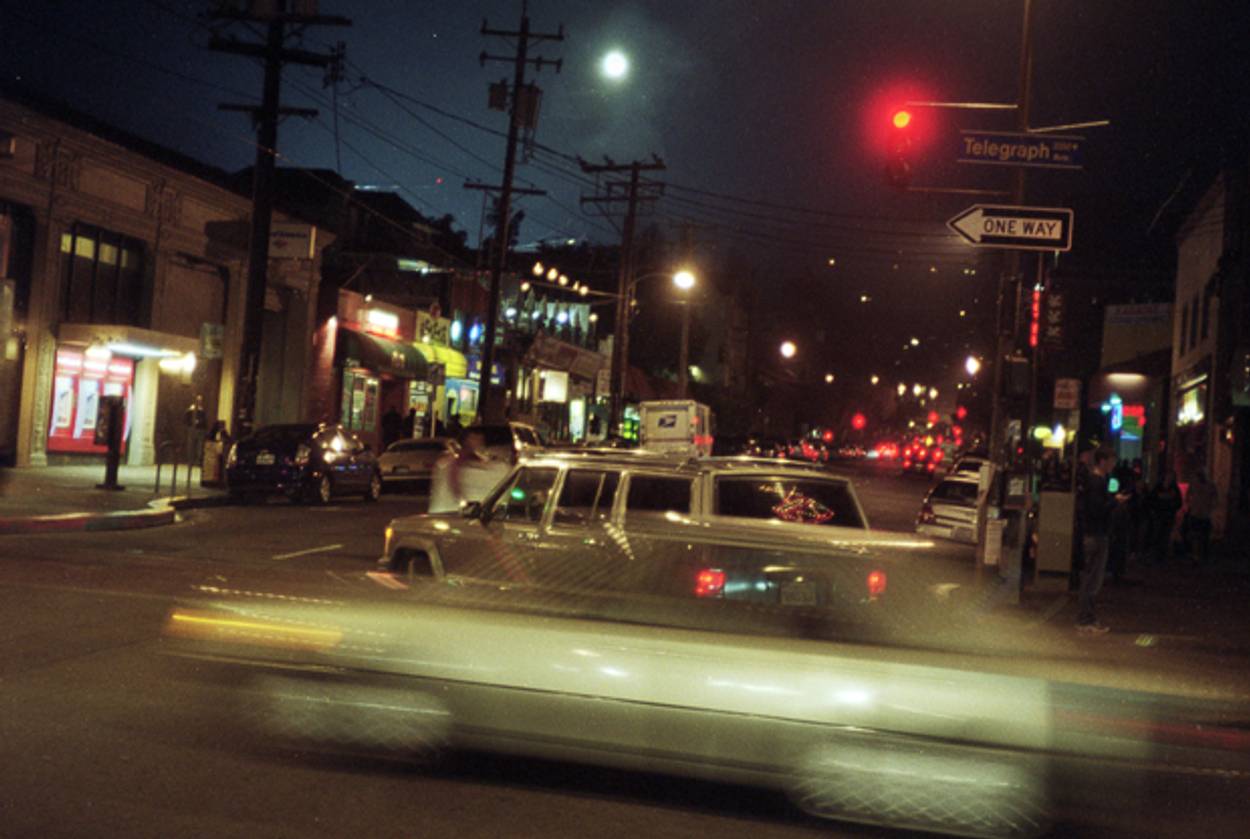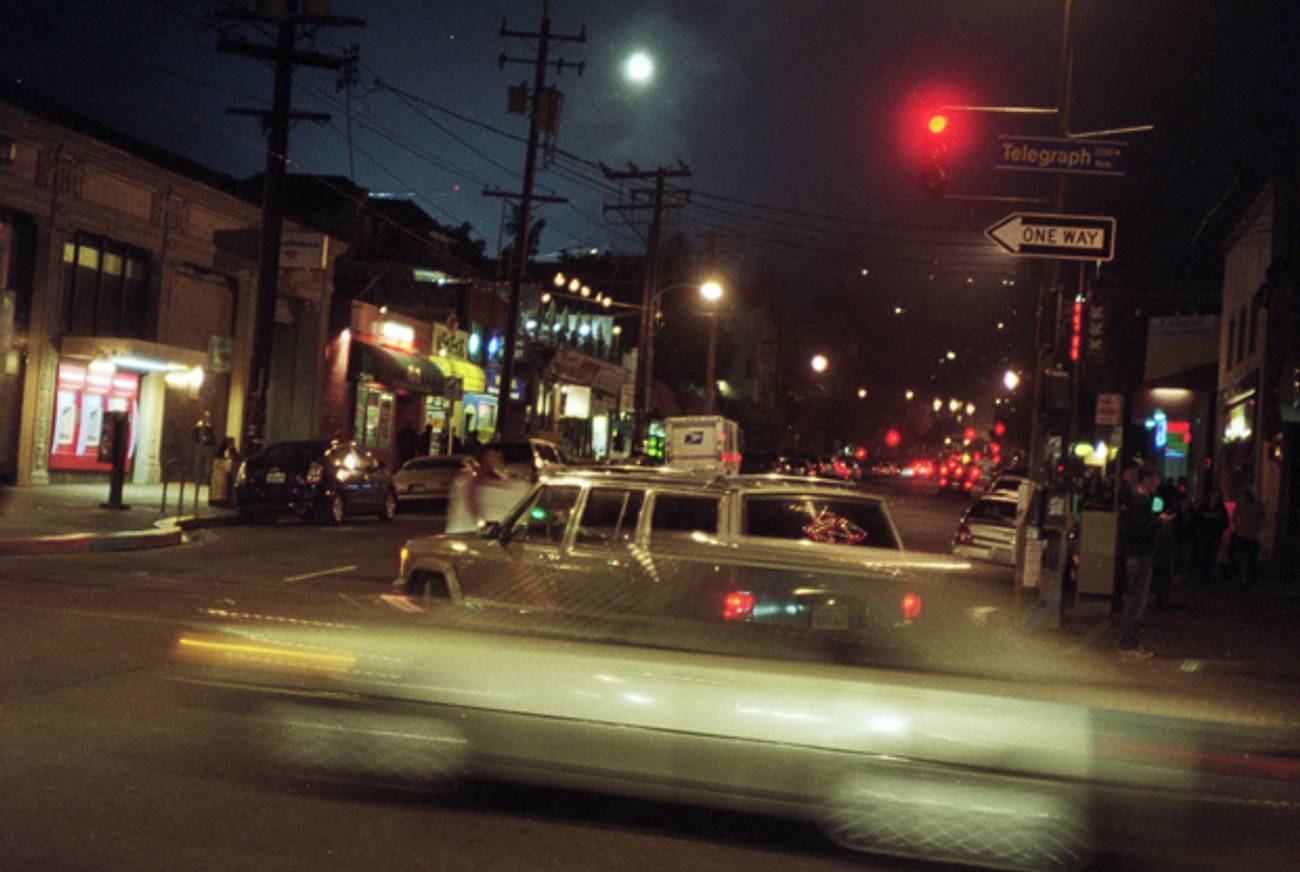Pulpless Fiction
Michael Chabon’s new novel Telegraph Avenue is typically stylish, but overwritten




Of all the dozens of characters in the teeming pages of Telegraph Avenue, the new novel by Michael Chabon, the one who seems to speak for the author’s deepest anxieties is Mike Oberstein, a Jewish lawyer who—perhaps in acknowledgment of his obesity—insists on going by “Moby.” Moby is one of the best customers at Brokeland Records, the Oakland record store that is the center of the novel’s whirling world; like Telegraph Avenue itself, he is obsessed with the jazz, soul, and funk of the 1960s and 1970s. But for Moby, this love of black music leads to a sadly misguided attempt to talk and sound black: “the style cobbled (with unquestionably sincere intentions of tribute) from the discarded materials of rap records, Grady Tate on Sanford and Son, a touch of Martin Lawrence, and then at the core, something really questionable, maybe Morgan Freeman as Easy Reader on The Electric Company.”
This patter naturally gets on the nerves of the novel’s black characters, but the person it bothers most is Nat Jaffe—the co-owner of Brokeland, also Jewish, also immersed in black music and culture. Nat, who was raised by a black stepmother and whose business partner and best friend, Archy Stallings, is also black, winces to hear Moby doing so clumsily what he has devoted his life to doing well: “If you were a white guy living along the edge of blackness all your life,” Chabon observes, “the worst thing was somebody around you trying to do the same.”
Telegraph Avenue plunges right into the challenge of racial “passing”—or, to put it more optimistically, into the freedom of creole. “Creole, that’s, to me, it sums it up,” Archy says late in the book, in the eulogy he delivers for his friend, the jazz-man Cochise Jones. “That means you stop drawing those lines. It means Africa and Europe cooked up in the same skillet.” Chabon, of course, is a famously Jewish writer whose last two adult novels—The Yiddish Policemen’s Union and the Pulitzer Prize-winning The Amazing Adventures of Kavalier and Clay—dealt with explicitly Jewish milieux. No one would challenge Chabon’s right to imagine an Alaska populated by Yiddish-speaking Jews, or to reanimate the world of the Jews who created the pantheon of comic book superheroes. In Telegraph Avenue, however, he devotes himself to imagining the lives of black characters in Oakland, Calif. The risk, as Chabon is fully aware, is that he will end up sounding like Mike Oberstein; the hope is that he will be Nat Jaffe.
Or, perhaps, Quentin Tarantino. Tarantino is the unmistakable presiding genius of Telegraph Avenue—in his love of ’70s film and music, his habit of remixing and pastiching old cinematic tropes, and his sometimes tense love affair with African-American speech and music. (To underscore the point, two characters meet at a film class devoted to the cinematic sources of Kill Bill.) Chabon sets his novel in 2004, but almost everyone in it is either a holdover from or obsessed with the 1970s. That goes for Julie Jaffe, Nat’s gay teenage son, who carries around an old eight-track tape player; for Nat and Archy, whose knowledge of the music of the 1970s is nerdily encyclopedic; and above all for Luther Stallings, Archy’s estranged father, who was briefly a blaxploitation movie star before he succumbed to drugs. So many people in the novel drive old cars, listen to old music, and watch old movies that it seems to take place in a timeless zone, a dreamtime Seventies.
Cetrtainly it is not quite convincing as a portrait of 2004. As the novel opens, Brokeland Records is faced with bankruptcy by the prospect of a new mall-sized record store opening down the street. This is a stock situation from a thousand movies—the plucky small businessman against the faceless conglomerate—but it doesn’t parse as a 2004 problem. By then it was obvious that even the big records stores were doomed by the rise of file-sharing and digital music. (Tower Records declared bankruptcy in 2004.)
But the situation at least serves Chabon as a way of emphasizing the obsolescence of Brokeland, which its owners think of as a “church of vinyl.” It also sets the Tarantino-like complications of the plot into motion. The planner of the new mall—known as the Dogpile Thang, in one of Chabon’s more dubious uses of black slang—is Gibson Goode, a former NFL quarterback turned record- and real-estate mogul. To build it, he needs the cooperation of Oakland city councilman Chan Flowers, a friend of Brokeland who suddenly, inexplicably, decides to back Dogpile instead. The reason, it emerges, is that Flowers is being blackmailed by Luther Stallings, who witnessed him commit a murder back in the 1970s. To survive, Archy must find a way to outwit his father, whom he loathes.
At the same time, Archy—who is the closest thing to a main character in Telegraph Avenue—is preparing for the arrival of his own child. His wife, Gwen, and Nat’s wife, Aviva, are partners in a Berkeley midwife practice, which is threatened with disaster when one of their clients nearly dies during labor. As if that weren’t enough, Archy suddenly learns that he himself is the father of a 14-year-old boy, Titus, who he has never met. And when Titus appears on the scene, Nat’s son Julie falls deeply in love with him.
There is, then, more than enough plot to keep track of in Telegraph Avenue. Yet the curious thing is how desultory the story feels. The novel moves slowly and never feels deeply invested in its own twists, even when they strive for a thriller-like suspense. Neither do the characters come fully alive, mainly because they all seem like variations on stock types. Gwen is a strong, no-nonsense black woman; Archy a middle-aged man afraid of commitment; Nat a record-geek obsessive (he is constantly, neurotically humming jazz riffs); Titus a troubled teen from a broken home. None of them has the freedom to surprise us, to act or think out of character, the way real people, and the best fictional people, can do.
The real heart of the novel is, rather, Chabon’s prose style—much as Tarantino’s visual style is the raison d’etre of his movies. This style is at the same time intelligent and impressive, and cumulatively ineffective and even tedious. Chabon is incapable of writing a sentence to serve the story or the characters. Each one is like a miniature canvas which he fills with wriggling metaphors, hyperbolic images, pop-culture references. The antic reigns: There is a talking parrot who imitates jazz records, and an ancient Chinese kung-fu master named Irene Jew, and Julie handing out business cards that identify him as a “libertine,” and a very Pulp Fiction-like discussion between thugs about bear-claw donuts. No one appears without his or her clothes and appearance being minutely catalogued, e.g., “She had on an April Cornell dress patterned with morning glories, bought secondhand at Crossroads, knee-length, with a V collar and quarter-length drawstring sleeves.”
A small example of Chabon’s narrative prodigality comes around page 300, when Gwen visits her hairdresser in advance of an important meeting. Not only do we learn the hairdresser’s name—actually there are two, both stereotypes, a black woman named Tyneece and a gay man named Mister Robert—but we are told about how Tyneece is consulting a phone psychic in Hawaii, who “had come close to locating the two bars of looted Reich gold that Tyneece’s great-grandfather had brought home from the war and buried, it was said, in one of three backyards belonging to three different Oakland women who were the mothers of his nineteen children.” Keep in mind that this outlandish story belongs to a character who’s in the book for at most a page; then multiply by hundreds of people and pages, and you get a sense of the hyperkinetic riffing that drives Telegraph Avenue.
Indeed, Chabon’s sentences are constructed consciously on the model of the jazz riff, endlessly extendable, with clauses piling up and vivid, unnecessary details. This culminates in the book’s third section, which is a single, 11-page sentence, chronicling the talking parrot’s flight through Oakland:
a bird of wide experience and rare talent set free over Telegraph Avenue, catching a scent of eucalyptus in its olfactory organs, banking left and heading north across Forty-third Street, up two blocks, passing over the Bruce Lee Institute of Martial Arts, in whose secret rooms, at the back of the stairs leading up to the roof, where exiles and religious fugitives and, for nine nights, a Living Buddha from the mountains of Sichuan, had all known bitterness and safety.
The virtuosity of the section, and of Telegraph Avenue as a whole, can’t be denied. But while style alone can make a movie live (as with Tarantino), it’s not quite enough for a novel of this scope, which wants to address subjects as deep and varied as first love, fatherhood, nostalgia, obsession, and race. Chabon’s pop exuberance and his likable, if conventional, humanism make Telegraph Avenue an ingratiating book, but they aren’t quite enough to make it deeply moving or memorable.
***
Like this article? Sign up for our Daily Digest to get Tablet Magazine’s new content in your inbox each morning
Adam Kirsch is a poet and literary critic, whose books include The People and the Books: 18 Classics of Jewish Literature.
Adam Kirsch is a poet and literary critic, whose books include The People and the Books: 18 Classics of Jewish Literature.